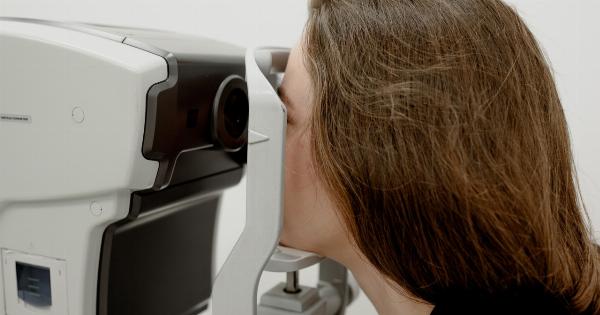Vision treatment and diagnosis refers to the various methods and techniques used to assess and address vision-related issues and conditions.
It encompasses a range of procedures and therapies designed to evaluate, monitor, and manage vision problems or disorders that may affect individuals of all age groups.
The Importance of Vision Treatment and Diagnosis
Vision is one of our most vital senses, allowing us to perceive and interact with the world around us.
Any impairment or disturbance to our visual system can significantly impact our daily lives, including our ability to learn, work, and carry out basic tasks.
Hence, it becomes essential to identify and address vision issues promptly and effectively. This is where vision treatment and diagnosis plays a crucial role in maintaining and improving visual health.
Common Vision Issues
There are several common vision issues that individuals may experience:.
- Refractive errors such as nearsightedness, farsightedness, and astigmatism.
- Age-related vision changes, including presbyopia.
- Eye conditions like glaucoma, cataracts, and macular degeneration.
- Amblyopia (lazy eye).
- Strabismus (crossed or misaligned eyes).
- Visual processing disorders.
Vision Treatment Options
Depending on the specific vision problem, several treatment options may be available:.
- Glasses or Contact Lenses: Refractive errors can often be corrected with prescription glasses or contact lenses, providing clear and focused vision.
- Refractive Surgery: Procedures such as LASIK or PRK can permanently reshape the cornea to correct refractive errors, eliminating the need for glasses or contact lenses.
- Vision Therapy: This involves a series of exercises and activities to improve coordination between the eyes and brain, enhancing visual skills and resolving certain vision-related problems.
- Medication or Eye Drops: Some eye conditions may require the use of medication or eye drops to manage symptoms or slow down disease progression.
- Eye Muscle Surgery: Strabismus and certain other eye conditions may be treated through surgical procedures that correct the alignment of the eyes.
- Vision Aids: For individuals with low vision or visual impairments that cannot be fully corrected, there are various assistive devices available, such as magnifiers, screen readers, and specialized software.
Diagnosing Vision Problems
Accurate diagnosis is a critical step in providing appropriate vision treatment. Common diagnostic procedures in vision care include:.
- Comprehensive Eye Examination: This includes visual acuity tests, refraction assessment, and a thorough examination of the eye’s structures and tissues to detect any abnormalities.
- Retinal Imaging: Retinal imaging techniques like fundus photography and optical coherence tomography (OCT) help evaluate the health of the retina and detect conditions such as macular degeneration or diabetic retinopathy.
- Visual Field Testing: This assesses the full vertical and horizontal range of vision and can indicate problems such as glaucoma or peripheral vision loss.
- Corneal Topography: It maps the shape of the cornea, aiding in the diagnosis of conditions like keratoconus or astigmatism.
- Electroretinogram (ERG) and Visual Evoked Potential (VEP) Tests: These measure the electrical responses of the retina and optic nerve, respectively, helping diagnose various retinal and neurological disorders.
Preventing Vision Problems
While not all vision problems can be prevented, certain measures can help maintain good eye health:.
- Schedule regular comprehensive eye exams, even if you have no apparent vision issues. Early detection of eye problems can prevent complications.
- Follow a nutritious diet rich in antioxidants, vitamins, and minerals that promote eye health. Include foods like leafy greens, citrus fruits, oily fish, and nuts.
- Protect your eyes from harmful UV rays by wearing sunglasses with adequate UV protection.
- Take regular breaks when using digital devices for extended periods to reduce eye strain and the risk of computer vision syndrome.
- Practice good eye hygiene, such as washing hands before touching the eyes and avoiding rubbing them excessively.
The Role of Technology in Vision Treatment
Advancements in technology have significantly improved the diagnosis and treatment of vision problems:.
- Robotic Surgery: Robotic-assisted surgery is becoming increasingly popular in various eye procedures, ensuring enhanced precision and safety.
- Laser Technology: Lasers are widely used in refractive surgeries, effectively reshaping the cornea and reducing dependency on glasses or contact lenses.
- Smart Contact Lenses: Innovative smart contact lenses can monitor glucose levels in tears for individuals with diabetes or help individuals with vision impairments by providing augmented reality.
- Artificial Intelligence (AI) in Diagnostics: AI algorithms can analyze retinal images, detecting early signs of eye diseases, and facilitating timely intervention.
- Telemedicine: Remote consultations and telemedicine have made healthcare more accessible, allowing individuals to receive expert vision care advice without traveling long distances.
Conclusion
Vision treatment and diagnosis play a crucial role in maintaining optimal eye health and ensuring effective management of vision issues.
Regular eye examinations, accurate diagnosis, and appropriate treatment options can significantly improve an individual’s visual acuity, quality of life, and overall well-being. By staying proactive in caring for our eyes and leveraging the advancements in technology, we can continue to prioritize our vision health for years to come.




























